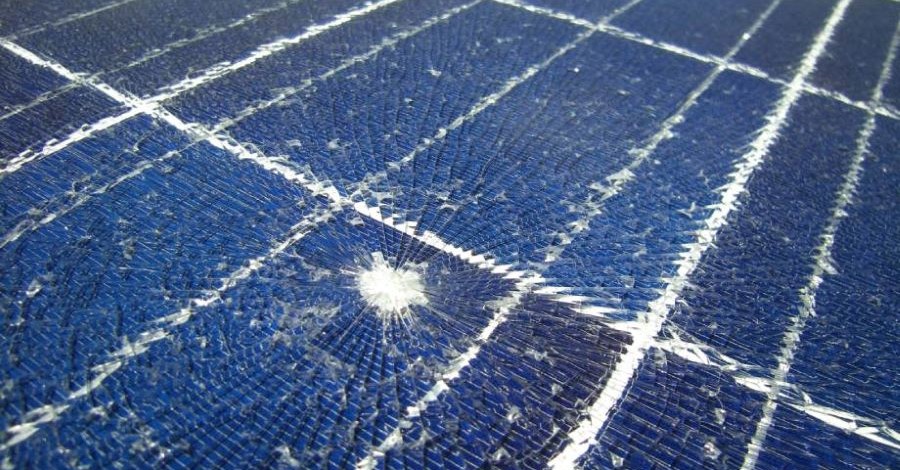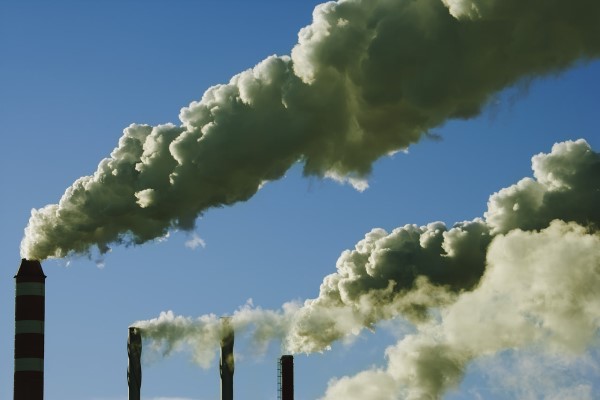As the world continues its shift towards more green energy, commonly known green energy sources continue to expand, and new technologies are starting to develop, all of which are impacting the energy sector. To better understand green energy, we must also define renewable energy. The main difference is “while most green energy sources are also renewable, not all renewable energy sources are considered entirely green” (Nationalgrid.com). In this article, legitimate questions about how green “green” energy truly is will be addressed by outlining issues such as natural gas being used as a “bridge” fuel, how Rare Earth Elements (REE) are producing wastewater with high concentrations of radioactive residues, and how solar panel recycling will cause issues down the line. Positive impacts to the energy sector by “green” sources will also be explored such as the lowering energy costs (solar and wind) and that technology now allows wind turbines to be recycled. Fiberglass from blades now have the potential to be returned to beneficial use. While these issues may not directly affect our clients today, there are long-term effects that could impact many clients down the road. Continued development within the sector also means new types of insureds will eventually emerge, and existing clients’ needs will change. Being current and knowledgeable on these issues is imperative for agents and brokers to remain effective and relevant as client needs evolve.
The move to zero emission by harnessing nature could have many future benefits, but it must make economic and environmental sense. The world will struggle to accept green energy with its current deficiencies. “Bridge” fuels are imperative for our economy and our environment. Natural gas continues to hold promise as an intermediate fuel source as it is the cleanest of the fossil fuels and is plentiful. The ultimate hope is for the eventual use of hydrogen in zero emission fuel cell vehicles. However, this technology has encountered unforeseen issues. In an article outlining the issues with this “bridge,” it states:
“Transporting H2/NG blends in the NG pipeline grid appears technically possible at modest fractions of 5–15% hydrogen by volume, but requires careful case by case assessment and could be expensive. Blending does not enable major reductions in GHG emissions from transport, unless “green” hydrogen can be cost effectively separated from the blend and delivered to highly efficient fuel cell vehicles. Ultimately, blend limits could make it difficult to utilize the existing NG system to deliver hydrogen at the scale needed to achieve deep cuts in transportation related GHGs. A dedicated renewable hydrogen pipeline system would be needed, if zero emission fuel cell vehicles play a major role in a future low carbon world” (GHG – Greenhouse Gas) (Ogden 2017). Essentially, to really make widespread use of hydrogen, we must commit to building miles and miles of hydrogen pipeline and, particularly in the U.S., we have a “not in my backyard” mentality due to the specter of pipeline releases.
Why not just ban all fossil fuels effective today and commit to solar and wind? It is very simple. REE mining has proven to have devastating effects on the environment as millions of tons of soil and rock are displaced and habitats destroyed. China has a significant portion of the world’s REE, and the world has watched as parts of China have been turned into ecological wastelands in pursuit of these elements. Is that “green” in any manner? The state council reported that over a half century of REE mining and processing these minerals has “severely damaged surface vegetation, caused soil erosion, pollution, and acidification, and reduced or even eliminated food crop output” (Mike Ives 2013). These REE are in fact what is used in electric vehicle (EV) batteries. As more facts come to light about electric vehicle battery components and the potential environmental impacts of battery recycling/disposal, one will begin to question how “green” these batteries and EVs truly are.
Is the answer to perhaps focus solely on solar power? If it were only that simple. Solar energy also has issues due to an inability to recycle solar panels. In the U.S., less than 10% of the country’s decommissioned panels are recycled (Peplow 2022). Solar panel lifespans are usually around 30 years because they rely on crystalline silicon, but their lives can be shortened by natural events such as hailstorms. Estimates say that, by 2030, there will be around 8 million metric tons of panels that can no longer be used, and by 2050, it is projected to reach 80 million metric tons (Nat. Energy 2020). If no cost-effective recycling solution is found, the green energy movement will become a mountain of toxic waste built with solar panels, spent batteries, and windmill components.
Every new technology has its challenges, but the positives for green energy going forward will continue to benefit the movement. The significant decrease in the cost of a kilowatt of solar energy over the last decade has surprised experts who believed it would take many more years to make solar energy affordable for the public. Having solar energy at an affordable cost per kilowatt allows more people to acquire solar panels for their homes and reduce the collective reliance on coal and fuel oils.
Time and technological advances hold the key for making “green energy” truly green. We are beginning to see the effects of science committing to solve the challenges of solar and wind. We see this with the new technology created to recycle wind turbine blades more efficiently. With the technology created by Carbon Rivers, there is now a potential circular economy for the wind industry. Materials from spent windmill blades can now be recycled into new blades instead of ending up in post-consumer waste streams. The process is explained below: “Carbon Rivers’ recycling uses pyrolysis—a process during which organic components of a composite (e.g., resins or polymers) are broken down with intense heat in the absence of oxygen and separated from the inorganic fiberglass reinforcement. The process converts organic products back into raw hydrocarbon products called syngas and pyrolysis oil, which can be used for energy production. This gives the process a net positive energy output” (Energy.gov 2022).
With the industry continuing to find ways to reuse and recycle spent panels, blades, and batteries, there is a future for green energy. Green energy is not ready to be the sole solution to our environmental challenges, but these challenges will fuel creativity, opportunity, and new industries.
Understanding the emerging issues in the energy sector helps us be a better source and advocate for clients. As agents and brokers, we cannot abandon fossil fuel (especially natural gas) clients, and we must continue to press for capacity and innovative risk solutions for these clients. Unless the world stops using plastics and synthetic fibers, there will always be a need for fossil fuels. The changing economic and environmental landscape also means that agents and brokers have an obligation to understand new green technologies to better serve these companies as they emerge and become our clients. Old dogs will have to learn new tricks as clients shift from well servicing contractors to windmill maintenance contractors, or the client who manufactured roofing materials begins manufacturing solar-capable roofing shingles. Our clients’ businesses will change, and our new clients will be engaged in solving the environmental changes created by solar, wind, batteries, and element mining. As agents and brokers, we need to learn the regulatory and legal environments our clients will face. We will need to identify emerging experts that have merged their knowledge of green technology and insurance to become invaluable business partners.
Like the world around us, times are changing. We must also change to compete and thrive in the coming years.
Jeffrey Hubbard is a Brown & Riding Principal and the firm’s Energy & Environmental Practice Leader. He specializes in energy and environmental accounts. He has spent over 25 years in the industry as an underwriter, manager, or broker and is known for his ability to tackle tough accounts. He has been the insurance editor for Brownfield News, is certified as an instructor for Continuing Education in the State of Texas, a regular presenter at IRMI conferences, and was named a 2018 and 2021 Top Specialist Broker by Insurance Business America.
Jeffrey can be reached via phone at 972.402.6664 or by email at [email protected].
- “Carbon Rivers Makes Wind Turbine Blade Recycling and Upcycling a Reality with Support from Doe.” Energy.gov, 22 July 2022, https://www.energy.gov/eere/wind/articles/carbon-rivers-makes-wind-turbine-blade-recycling-and-upcycling-reality-support.
- Edmondson, Dr James. “Rare Earths in EVs: Problems, Solutions and What Is Actually Happening.” IDTechEx, IDTechEx, 28 Oct. 2021, https://www.idtechex.com/en/research-article/rare-earths-in-evs-problems-solutions-and-what-is-actually-happening/25071.
- Heath, Garvin A., et al. “Research and Development Priorities for Silicon Photovoltaic Module Recycling to Support a Circular Economy.” Nature News, Nature Publishing Group, 13 July 2020, https://www.nature.com/articles/s41560-020-0645-2#citeas.
- Holmes, Bob. “Why Green Energy Finally Makes Economic Sense.” Knowable Magazine | Annual Reviews, Annual Reviews, 14 Jan. 2020, https://knowablemagazine.org/article/food-environment/2020/cost-of-renewable-energy.
- Ives, Mike. “Boom in Mining Rare Earths Poses Mounting Toxic Risks.” Yale E360, https://e360.yale.edu/features/boom_in_mining_rare_earths_poses_mounting_toxic_risks.
- Ogden, Joan, et al. “Natural Gas as a Bridge to Hydrogen Transportation Fuel?” STEPS, 21 Feb. 2018, https://steps.ucdavis.edu/natural-gas-bridge-hydrogen-transportation-fuel/.
- Peplow, Mark. “Solar Panels Face Recycling Challenge.” Cen.acs.org, 22 May 2022, https://cen.acs.org/environment/recycling/Solar-panels-face-recycling-challenge-photovoltaic-waste/100/i18#:~:text=In%20the%20US%2C%20there%20are,country’s%20decommissioned%20panels%20are%20recycled.
- “What Is Green Energy?” Clean & Renewable Energy | National Grid Group, https://www.nationalgrid.com/stories/energy-explained/what-is-green-energy.
- “What Is Green Power?” EPA, Environmental Protection Agency, https://www.epa.gov/green-power-markets/what-green-power.




